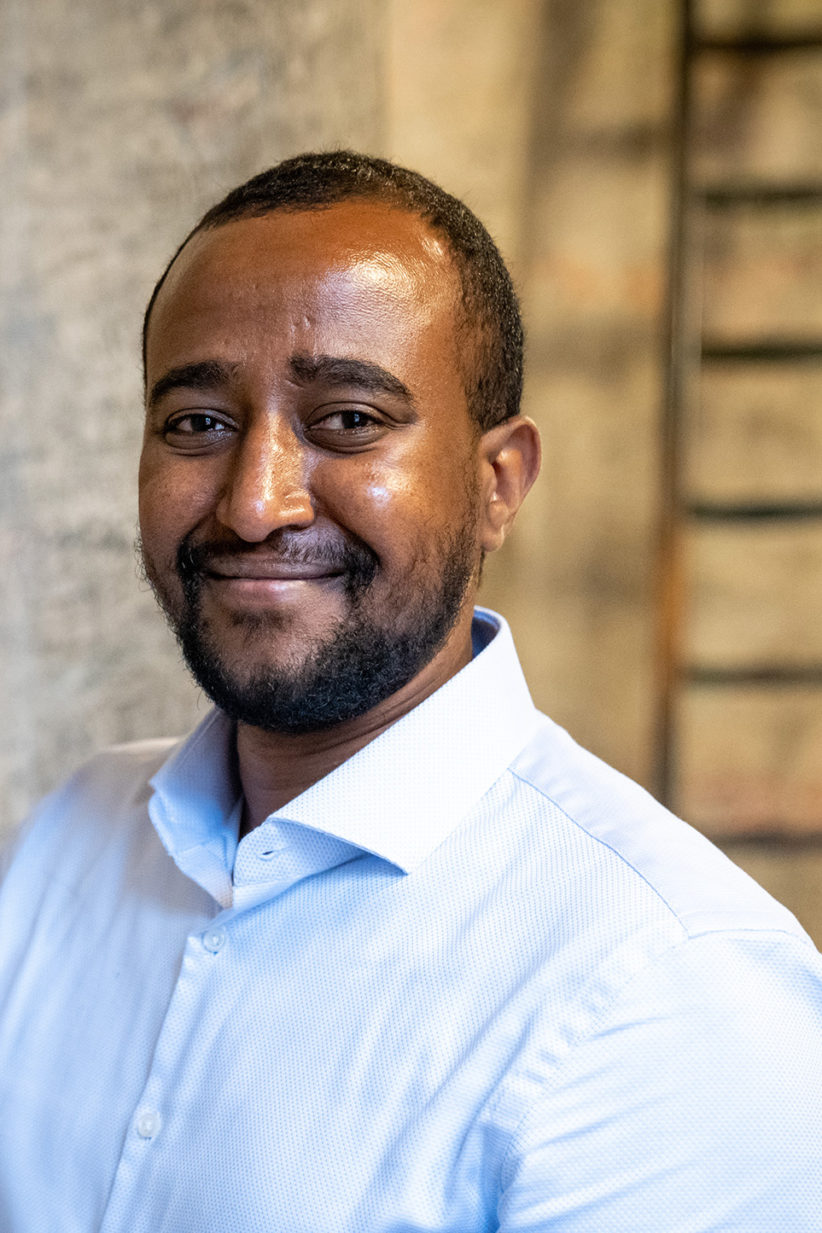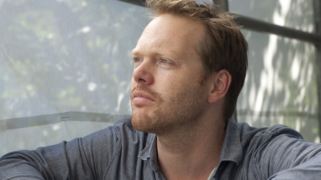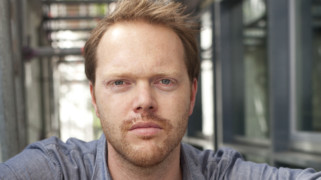Care for the elderly, an experience from two diverging continents
Ephrem Baraki Tesfay is one of the pioneers in Leven Lang Leven (Living a Whole Life++Living a Whole LifeWith the “Living a Whole Life” project, Kennisland has initiated a new, positive movement around growing old better – a movement of pioneers who all have an innovative vision for nursing care, who have different ideas about how it should be organised, and who also want to put those ideas into practice. Read more). With his project Tale Talk, he was able to acquire a spot in Kennisland’s pioneer program that supports social innovators further developing their innovation for elderly care. Besides Ephrem being an inspired social entrepreneur, he is also a doctor and a scholar with ambitious ideas about reforming our healthcare system. In this article he shares his thoughts on elderly care both here and in Africa.
I am a doctor from Ethiopia, a country in the Horn of Africa, a continent struggling with poverty, communicable diseases and deadly conflicts. In a continent where the majority barely make it to their 60s and 70s, I always considered myself lucky to grow up with my grandparents who are now in their 80s and 90s. However, there is one inevitable life process I am confronted with: the fact that they are growing old. As years pass, I witness their struggle in daily activities due to loss of vision, impaired hearing, stiff joints, and so on. Even though my grandparents have to live with inevitable physical decline in a country that is not used to accommodate the ageing population, their sense of humour and life experience have always been a constant I am blessed to be surrounded with. They inspired me to join medical school and serve vulnerable groups in refugee camps.
While I was working in a refugee camp, I met a Dutch girl who I fell in love with and a few years later, I moved to the Netherlands to live with her. After moving here, I decided to join a master’s program, Vitality and Ageing++Vitality and AgeingInterdisciplinary programme combining various perspectives on ageing such as the biology of healthy ageing, public health, and healthcare management. Read more at Leiden University. Yes, ageing! I wanted to study the ageing I witnessed with my grandparents. The existing medical care in Africa is far less developed, and geriatric care is considered a “luxury” in a country where there are simply too many challenges to tackle. Now I had the opportunity to study ageing and elderly care in an ageing population with a well-developed healthcare system.
Ageing is not just limited to Europe or ‘the West’. Worldwide the ageing population is rapidly growing, which calls for the development of a sustainable and integrated care system for elderly. Developed countries like the Netherlands have one of the highest per capita expenditure for health in the world.++Expenditure per capitaOnly Sweden, Austria, Germany, Norway, Switzerland and the United States spend more on health than the Netherlands. In 2016 alone, the healthcare cost of the Netherlands was 10.5% of its GDP. With rapidly changing demography, the sustainability of the existing expensive health care system is at stake.
Even in Africa, we expect to witness the fastest growth of the ageing societyEven in Africa, we expect to witness the fastest growth of the ageing society in the coming three decades. in the coming three decades. An improving life expectancy while living in a low socioeconomic condition puts the continent in a double burden of less developed and poorly financed healthcare systems where elderly care is out of the picture, despite the increasing prevalence of non-communicable chronic diseases. The increasing wave of non-communicable diseases has already knocked my family’s door. On the contrary to the long and vital lives of both my grandparents, my three uncles and my aunt are living with type two diabetes.
One of my uncles is Mekonen, a woodworker, the second child for my grandparents. My grandmother used to tell me beautiful and at times funny stories of his childhood. My grandmother has a way of telling stories, that makes it feel like it happened yesterday. You can see it in her eyes, he is still the boy she loves the most. Now Mekonen is in his early 60s and I barely saw him visiting his mother and father. I guess that is why I grew up listening to his stories quite often.
The first time I saw him was just before I joined medical school. Besides his greying hair and wrinkling face, all I saw was the boy I heard about in the stories when I grew up. Unlike our stories which will survive in the minds of those who surround us, we are subject to inevitable entropy and death.Unlike our stories which will survive in the minds of those who surround us, we are subject to inevitable entropy and death. Unfortunately, entropy is embedded in the fabric of our making. Mekonen is no more the boy in my grandma’s story, he has been struggling with diabetes for a long period of time. He has developed diabetic neuropathy on his feet, hypertension, chronic kidney injury, mild retinopathy and he has lost several teeth. Now and again, he is admitted to a private hospital due to uncontrolled blood sugar level. On top of that, he has always been lonely, isolating himself from family members and friends despite our attempt to reach out. With all his conditions, he still works with heavy machineries against medical advice. Mekonen’s medical history is the medical history of many people that I have come across in my practice.
A care pathway in Africa: unavailable, fragmented and disorganized
Now let us look at Mekonen’s care pathway in Africa. He will visit a general practitioner (GP) in one of the district public hospitals. After some laboratory investigations and prescriptions, for which he will pay out of his pocket, he will be referred to a secondary specialised hospital with a waiting list of several months to years. Once he gets there, most of the specialised care services are not available, simply because the hospital does not have the human and material resources to provide the care needed.Most of the specialized care services are not available, simply because the hospital does not have the human and material resources to provide the care needed. After paying out of his pocket money again, he will be recommended to visit a very expensive specialised private hospital where he might have a slightly better chance of getting relatively good quality care, but yet fragmented and disorganised. As long as he can afford the expensive therapy, he will continue to be a client of a private hospital despite the worsening of his conditions. By the time he cannot work anymore, the care ceases to exist. Now, you can imagine why my uncle keeps working hard against medical advice. In a continent where the pension and tax system are poorly organised, my uncle’s medical history and care pathway is the reality for millions of older adults suffering from chronic non-communicable diseases.
A care pathway in Europe, the Netherlands: fragmented and over-specialised
Let us say my uncle lives here in the Netherlands, I think it is much easier for you to imagine what his care pathway will look like.
My uncle will visit a GP in his own neighbourhood and he will be referred to the secondary care system where he will visit a neurologist, a nephrologist, a cardiologist, an ophthalmologist and a podiatrist for his diabetic feet. There might be a waiting list, but he will for sure receive all specialised care of leading-edge quality. My uncle will not have to pay out of his pocket everywhere he goes, he must have his insurance premium. The well-organised pension and tax system will make him a beneficiary of long-term and social support care with a small out-of-pocket contribution. He does not need to work against medical advice to cover his medical expenses. Compared to Africa, my uncle is in a medical paradise.
But even in the Netherlands with an advanced and well-organised healthcare system equipped with state-of-the-art technology, fragmented and specialised care services are the vortexes of healthcare expenditure. My uncle has to go back and forth to specialised care services. In the process, his social isolation might remain unnoticed and if noticed, it will be pushed aside by the focus on his medical problems.His social isolation might remain unnoticed and if noticed, it will be pushed aside by the focus on his medical problems.The bill for care is organised around the medical diagnosis, with separated payment for each condition. For people like my uncle with multiple morbidities, the bill will be to the roof. As my uncle grows older and older, the outcome from this expensive and duplicated care becomes hardly attractive and far less satisfying.
Towards a new care pathway in the Netherlands: value-based, patient-oriented, integrated care
Realising the duplication of services and payments in fragmented specialised care, the Dutch Ministry of Health designed a new payment model for chronic disease management known as bundle payment. Bundle payment is an integrated approach, in which care is organised with a multidisciplinary team around the patient. In 2007, teams of health care providers started experimenting with bundled payment packages for diabetes. Later on, bundle payment for diabetes, COPD and vascular risk management became permanent. With these care pathways, my uncle would not have to go back and forth visiting every specialty service, on the contrary, he would get all the care he needs under one roof.My uncle would not have to go back and forth visiting every specialty service, on the contrary, he would get all the care he needs under one roof.
The idea of patient-oriented integrated care was introduced by Porter and Teisberg who published their landmark manuscript on “Redefining Health Care”. Besides their focus on shifting from fee-for-service payment to value-based or outcome-based financing, they emphasised the need to work along patient pathways and in Integrated Practice Units (IPUs) to overcome fragmented and isolated specialised care units and promote working in multidisciplinary patient-oriented teams.
We may need a decade or more to observe the full impact of implementing IPUs in the Netherlands. So far, IPUs are shown to be efficient in reducing duplication of services due to less movement of patients from one specialty unit to the other. Moreover, IPUs reduce costs due to the utilisation of a bundle payment for a full cycle of integrated care of a medical condition.
In 2017, the Rijnstate Hospital in Arnhem started value-based health care with IPUs directed to specific medical conditions like hip osteoarthritis, cataract, prostate cancer etcetera. The hospital reported that IPUs saved duplication in services and administration, reduced cost with better cost management and resulted in improved quality of care.
One of the gaps of this interesting innovation is the care for older individuals. In the Netherlands, the emerging IPU practices are mostly limited to the secondary care level. In reality, the gatekeepers of the Dutch healthcare system are primary care providers, especially for elderly struggling with longstanding medical and psychosocial problems.
IPUs are designed and financed to provide multidisciplinary care for a single medical diagnosis. As you might remember from the medical history of my uncle, the core of all his medical complications was diabetes. Similarly, ageing is the epicentre of multiple and interrelated medical conditions that limits activities of daily life in elderly. Planning a cycle of care per medical condition could not fit the needs and desires of older patients.
You might ask how we make elderly care more sustainable and more elderly oriented. The answer lies at the heart of the elephant in the roomYou might ask how we make elderly care more sustainable and more elderly oriented. The answer lies at the heart of the elephant in the room.: age! Like I said earlier, almost all medical conditions in elderly are related to the process of ageing. As my uncle Mekonen grows older and older, his vision starts to get worse besides his diabetic retinopathy, his hearing has started deteriorating and his joints are getting stiff, creating more morbidity and rendering him frail. At first, his work and then his daily activities will be restricted. He will reach a point where he couldn’t dress himself anymore, he couldn’t feed himself anymore. For a lonely person like him, activities of daily life are far more important than a cure to his diabetes.
The commonly used outcome measures of health are often unrealistic for older frail individuals and hence result in lower patient and provider satisfaction. That is why till date, the government supports care providers and insurers with subsidies to adjust for the age of their clients.
Placing frailty, resulted from age-related comorbidities++ComorbidityThe presence of one or more additional conditions often co-occurring with a primary condition., as a primary target of care will provide us an alternative and sustainable elderly care pathway.Placing frailty, resulted from age-related comorbidities, as a primary target of care will provide us an alternative and sustainable elderly care pathway. Instead of subsidizing the age factor, we can create a care pathway tailored to address frailty and its impact on activities of daily life.
Integrated frailty care package, an alternative care pathway for elderly
In the Integrated Frailty Care Package (IFCP), care will be organised around the older individual instead of the patient seeking out various caregivers. IFCP aims to provide the full episode of care not limited to one medical condition, but for the interrelated medical conditions (comorbidities) and concurrent psychological and social conditions that render the older patient frail. Based on the degree of frailty, packages of care will be made available at primary care level.
With IFCP, a team of GPs, community nurses, social workers and psychologists work together for each individual older patient. The team will be the link between their patients and geriatricians and other specialists who will have weekly consultations at primary care centers for specialised care needed.
In my uncle’s case, whenever he visits his general practitioner, he will receive a full package of care not limited to his diabetes but for the whole range of morbidities including a social and psychological intervention to his loneliness, all under one roof. The specialists will visit him at the GP practice, and not the other way round.
This alternative care pathway is derived from the earlier mentioned IPU but is tailored to the needs of older patients who are confronted with multiple medical conditions. By safeguarding a strong and familiar medical team around individual older patients, IFCP poses an answer to the growing demands on the healthcare system. The big question is: how will you finance such an integrated system and who will be in charge of governing it?The big question is: how will you finance such an integrated system and who will be in charge of governing it?
Let me take you back to my uncle’s care pathway in the Netherlands, my uncle will have a mandatory insurance premium which covers his medical expenses at primary and secondary care level. Besides the insurance premium, the costs for his care will be derived directly and indirectly from taxes he contributed and small out-of-pocket money. The financing is also prone to duplication of costs, complicated administration and regulatory procedures.
With IFCP, a joint fund can be organised from the basic care insurance premium, the long-term care and the social support fund. IFCP will cover both acute medical and psychosocial conditions, as well as consequent long-term disabilities. With the joined fund in place and using age-oriented outcome measures and indicators, it is possible to finance and regulate IFCP at primary care level.
Once fully integrated in the healthcare system, IFCP will not only reduce duplication of services but at the same time substantially increase the quality of care for older individuals. This will reduce hospitalisation and nursing home admissions, allowing older people to stay home as long as possible. Reduction in nursing home admissions will lead to shorter waiting lists for institutionalised nursing care, which in turn will increase patient satisfaction and decrease workload for care providers.
I believe that IFCP might offer a fighting chance in the effort to make care for older people sustainable.I believe that IFCP might offer a fighting chance in the effort to make care for older people sustainable. IFCP could be a converging health care pathway for elderly that could be implemented in both continents, Europe and Africa.
What do you think about it? There is more to IFCP than I can explain here, and I would love to hear your opinion. I invite you to contact me about your thoughts and discuss further. If you wish to hear more about IFCP and other ideas for innovating healthcare, please feel free to contact me at e.b.tesfay@gmail.com.




